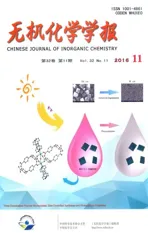两个基于呋喃-3-酮配体的钯(Ⅱ)化合物的合成、晶体结构和光谱性质
2016-11-28赵明霞熊丽琴蔡永乐任红玉张华北齐传民
赵明霞 熊丽琴 蔡永乐 常 进 任红玉 张华北 齐传民*,
(1山西工程技术学院采矿工程系,阳泉045000) (2上海交通大学生物医学工程学院,上海200025)
(3北京师范大学化学学院,教育部放射性药物重点实验室,北京100875)
两个基于呋喃-3-酮配体的钯(Ⅱ)化合物的合成、晶体结构和光谱性质
赵明霞1熊丽琴2蔡永乐1常进3任红玉3张华北3齐传民*,3
(1山西工程技术学院采矿工程系,阳泉045000) (2上海交通大学生物医学工程学院,上海200025)
(3北京师范大学化学学院,教育部放射性药物重点实验室,北京100875)
合成了2个钯(Ⅱ)化合物Pd(L1)2(1)和Pd(L2)2(2),(L1=(Z)-4-((对甲苯胺基)亚甲基)-2,2,5,5-四甲基二氢呋喃-3(2H)-酮,L2=(Z) -4-((邻甲苯胺基)亚甲基)-2,2,5,5-四甲基二氢呋喃-3(2H)-酮),并利用元素分析,红外光谱,核磁共振氢谱,紫外光谱和X射线单晶衍射等手段对其结构进行了表征。X射线单晶衍射表明,化合物1和2中包含多种弱相互作用。在化合物1中,呋喃环上氧原子和苯环上的甲基氢原子之间形成氢键,氢键桥联分子形成了一条平行于c轴方向的一维链结构,一维链之间通过C-H…H-C和C-H…C弱相互作用形成了三维超分子结构。在化合物2中,分子之间通过C-H…H-C和C-H…C弱相互作用形成了一个二维层状结构。
合成;Pd(Ⅱ);呋喃-3-酮;晶体结构;弱相互作用
The understanding of various molecular interactions plays a major role in supramolecular chemistry and crystal engineering[1-6].The knowledge of structural motifs generated by such interactions can be utilized in the design of novel materials with desirable physical and chemical properties[7].Hydrogen bonding interactions and π-π stacking interactions are by far the well-studied interactions[8-12].These interactions are employed to control the conformational and topological features of the molecular assembly in the solid state[13-19]. More recently,these studies have been extended to unconventional hydrogen bonds where there are unusually short H…H contacts typically in the range from 0.17 to 0.24 nm[20-31].Several examples are known involving X-Hδ+…Hδ--Y interactions,such as B-H…H-N interactions[22]and Ga-H…H-N bonding[24],and X-Hδ+…Hδ+-Y interactions,such as C-H…H-C interactions[28].Herein,we report the syntheses and structures of two Pd(II)compounds containing furan-3-one ligands,which are stabilized by the weak interactions.The combination of C-H…O interactions and C-H…H-C interactions generates molecules forming a 3D network in 1,while the combination of C-H…H-C interactions and C-H…C interactions links molecules forming a 2D layered framework in 2.
1 Experimental
1.1Materials and measurements
All chemicals used were of analytical grade.The solvents were purified by conventional methods.C,H and N were determined using an Elementar vario EL elemental analyzer.The IR spectra were recorded on a Nicolet-AVATAR 360 FT-IR spectrometer using KBr pellets in the 4 000~400 cm-1regions.1H NMR spectra were recorded on a Varian 500 Bruker spectrometer.X-ray measurements were made on a Bruker Smart 1000 CCD diffractometer with graphite monochromated Mo Kα(λ=0.071 073 nm)radiation. UV-visible spectra were measured using a GBC Cintra 10e UV-visible spectrophotometer in CH3OH solution. The ligands L1and L2were prepared according to the literature[32]and their structures were displayed in chart 1.
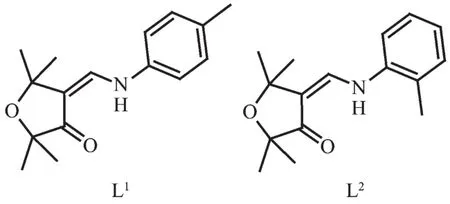
Chart 1 Structures of the ligands L1and L2
1.2Synthesis of the complex Pd(L1)2(1)
A solution of Pd(CH3COO)2(0.011 2 g,0.05 mmol) in tetrahydrofuran(4 mL)was added dropwise to 4 mL tetrahydrofuran solution of L1(0.025 8 g,0.1 mmol). After heating for a while,4 mL CH3CN was added to the solution.The resulting mixture was refluxed for 2 h,and then cooled to room temperature.Then the reaction mixture was filtered and the red block-shaped crystals of 1 were obtained from the filtrate at room temperature after a few days.Anal.Calcd.for C32H40N2O4Pd(%):C,61.55;H,6.44;N,4.52.Found(%):C, 61.68;H,6.47;N,4.50.IR(KBr pellet,cm-1),2 973(m), 2 924(w),1 608(s),1 518(m),1 500(s),1 485(m), 1 457(m),1 424(m),1 368(m),1 357(m),1 308(m), 1 262(w),1 219(m),1 186(w),1 174(w),1 139(m), 991(m)897(w),841(m),825(m).1H NMR(500 MHz, CD3OD):δ 0.85(s,6H,-C(CH3)2),1.33(s,6H,-C(CH3)2), 2.33(s,3H,Ar-CH3),6.88(s,1H,CH),7.04(d,J= 7.95 Hz,2H,Ar-H),7.14(d,J=7.95 Hz,2H,Ar-H).
1.3Synthesis of the complex Pd(L2)2(2)
Using a procedure similar to that described above,reaction of ligand L2with Pd(CH3COO)2afforded complex 2 as red block-shaped crystals.Anal.Calcd. for C32H40N2O4Pd(%):C,61.47;H,6.44;N,4.53. Found(%):C,61.68;H,6.47;N,4.50.IR(KBr pellet, cm-1):2 975(w),2 925(w),1 610(s),1 512(s),1 482 (m),1 456(m),1 422(w),1 360(m),1 305(m),1 263 (m),1 187(w),1 140(w),1 127(w),992(w).1H NMR (500 MHz,CD3OD):δ 0.87(s,6H,-C(CH3)2),1.36(s, 6H,-C(CH3)2),2.36(s,3H,Ar-CH3),7.14(s,1H,CH), 6.93(t,J=8.10 Hz,1H,Ar-H),7.04(m,2H,Ar-H), 7.19(d,J=8.05 Hz,1H,Ar-H).
1.4X-ray crystallographic study
Crystallographic data of complexes 1~2 were collected on a Rapid-AUTO diffractometer and a Bruker SMART 1000 CCD diffractometer with graphite monochromatized Mo Kα radiation(λ=0.071 073 nm),respectively.ABSCOR-empirical absorption corrections were based on Fourier series approximation.The structures were solved by direct methods and refined by full-matrix least-squares on F2using the SHELXS-97 and SHELXL-97 programs[33].All non-hydrogen atoms were refined anisotropically.H atoms bound to C were placed in calculated positions and allowed to ride at distances of 0.093 nm(CH aromatic),0.096 nm(CH3)and 0.097 nm(CH2).The crystallography details for complexes 1 and 2 are presented in Table 1.Selected bond lengths and angles for complexes 1 and 2 are listed in Table2and 3.
CCDC:289373,1;629001,2.
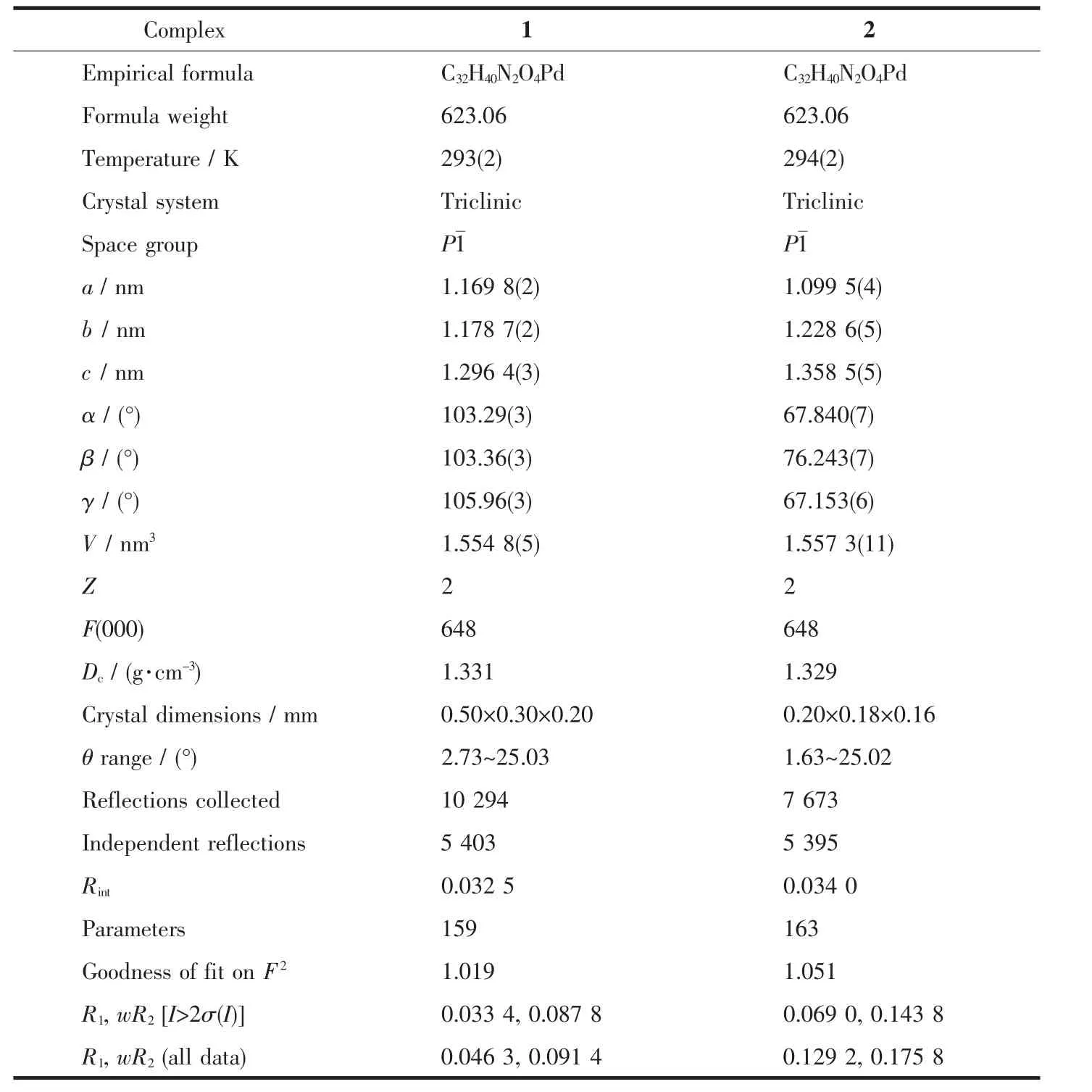
Table1 Crystal data and structure refinement parameters for complexes 1~2

Table2 Selected bond lengths(nm)and bond angles(°)for 1

Continued Table 2
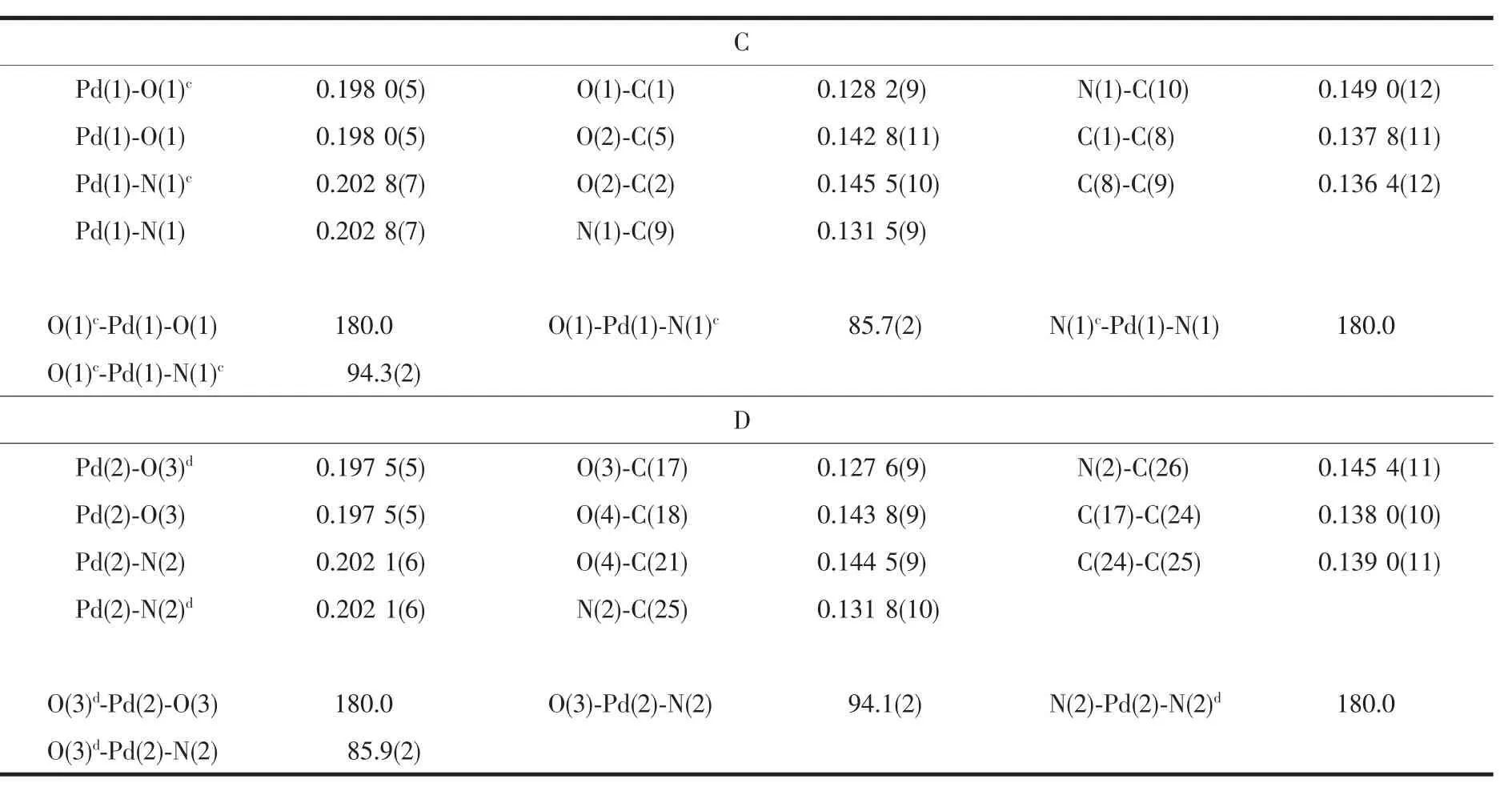
Table3 Selected bond lengths(nm)and bond angles(°)for 2
2 Results and discussion
2.1Structure description of Pd(L1)2(1)
Complex 1 crystallizes in the triclinic system, space group P1.The asymmetric unit contains two independent molecules.Both molecules(A and B) have similar conformations.In each molecule,two(L1)-ligands chelate to the Pd(Ⅱ)ion through their N and O donors,giving a four-coordinated Pd(Ⅱ)center with a trans-N2O2donor set.The coordination geometry at Pd(Ⅱ)is square-planar,with standard values for the distances from the metal ion to the coordinated atoms(Pd1-N1:0.203 0(2),Pd1-O1:0.199 2(2)nm for molecule A;Pd2-N2:0.203 1(2),Pd2-O3:0.199 12(18) nm for molecule B)(Fig.1).The six-membered chelate ring has a bite angle N-Pd-O of 93.58(9)°and 93.46(8)° for molecule A and B,respectively.The phenyl ring is almost perpendicular to the molecule plane:thedihedral angles between the phenyl ring and the PdN2O2plane is 88.0(5)°for molecule A and 86.2(5)° for molecule B.The furan ring is nearly coplanar with the molecule plane:the dihedral angles between the furan ring and PdN2O2plane is 2.6(4)°for molecule A and 0.5(4)°for molecule B.The angles between the furan ring and the methyl groups are 88.7(11)°for C2/ C3/C4 and 89.7(11)°for C5/C6/C7 in molecule A,and 89.9(10)°for C21/C22/C23 and 89.8(9)°for C18/C19/ C20 in molecule B.
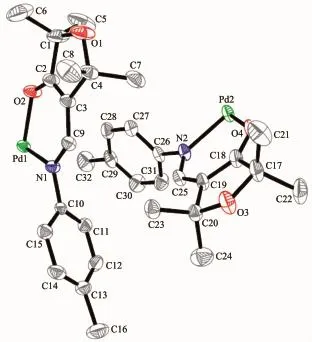
Fig.1 Asymmetric structure unit of 1

Table4 Geometrical parameters of weak interactions in 1 and 2
In the molecule A,there are weak C-H…O hydrogen bonding interactions between the furan O atom and methyl H atom of phenyl ring(C16-H16B…O2 0.356 0 nm,Table 4),which bridge molecules forming an infinite chain along the c axis(Fig.2).In the molecule B,there are weak C-H…H-C interactions between the methyl H atom of phenyl ring and methyl H atom of furan ring(C22-H22A…H32B-C32,H22A…H32B 0.239 8 nm),which connect molecules giving rise to an infinite chain along the b axis.In addition,there are weak interaction(C30-H30…8B-C8,H30…H8B 0.223 3 nm,C5-H5…C31 0.373 0 nm,H5…C31 0.283 8 nm)between molecule A and molecule B,which further interconnect molecules resulting in a 3D network(Fig.3).
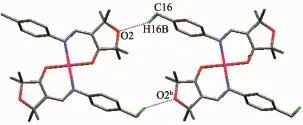
Fig.2 View of the 1D chain of 1 viewed along the c axis
2.2Structure description of Pd(L2)2(2)
Complex 2 crystallizes in the triclinic system, space group P1.Similar to complex 1,the asymmetric unit of 2 contains two independent molecules(C and D).The Pd(Ⅱ)ion center is coordinated by a N2O2donor set provided by two(L2)-ligands in transposition to complete the coordination sphere(Fig.4).
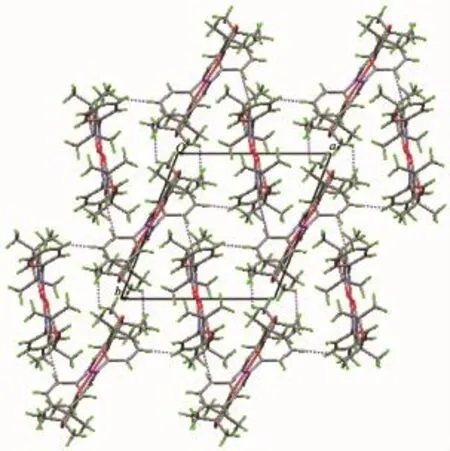
Fig.3 View of the 3D network of 1 viewed down the c axis
The coordination geometry at Pd(Ⅱ)is squareplanar,with standard values for the distances from the metal ion to the coordinated atoms(Pd1-N1 0.202 9(7) nm,Pd1-O1 0.198 0(5)nm for molecule C;Pd2-N2 0.202 1(6)nm,Pd2-O3 0.197 5(5)nm for molecule D). The six-membered chelate ring has a bite angle(N-Pd-O)of 94.3(2)°and 94.1(2)°for molecule C and D, respectively.The dihedral angles between the phenyl ring and the PdN2O2plane are 75.75(15)°and 69.38(11)° for molecule C and D,respectively,which are smaller than those observed in complex 1.The dihedral angles between the furan ring and PdN2O2plane are 3.25(16)° and 2.98(19)°for molecule C and D,respectively, which are larger than those observed in complex 1. The angles between the furan ring and the methyl groups are 89.6(3)°for C4/C8/C9 and 89.8(4)°for C1/ C6/C7 in molecule C,and 89.1(5)°for C17/C22/C23 and 89.8(4)°for C20/C24/C25 in molecule D.These values are similar to those observed in complex 1.
Compared with the complex 1,no C-H…O hydrogen bonding interactions were found between the furan O atom and methyl H atom of phenyl ring in complex 2.In molecule D,weak interactions between the methyl H atom of furan ring and phenyl H atom (C20-H20A…H29-C29,H20A…H29 0.2357 nm), link molecules forming an infinite chain along the b axis,which is further held together with molecule C via the weak interactions(C32-H32A…H6C-C6, H32A…C 0.236 1 nm,C16-H16C…C27 0.361 5 nm, H16C…C27 0.285 5 nm,Table 4),giving rise to a 2D layered framework(Fig.5).
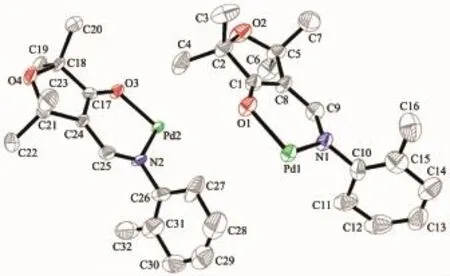
Fig.4 Asymmetric structure unit of 2
The average Pd-O bond distances are 0.199 16 nm in 1 and 0.197 75 nm in 2.The average Pd-N bond distances in 1 and 2 are 0.203 05 and 0.202 45 nm,respectively.These values are within the range of those observed for other 4-coordinated Pd(Ⅱ)complexes with ligands containing O and N atoms[34-37].In complexes 1 and 2,the distribution of the bond lengths over the fragments N-C-C-C-O of the six-membered chelate ring indicates significant delocalization of the electron density.Similar structure has been reported in the Pd(Ⅱ)complex with 3-(1-aminoethylidene)-2H-chromene-2,4(3H)-dione[34].

Fig.5 View of the 2D layered framework of 2 viewed down the a axis
2.3IR,UV-Vis and1H NMR spectra
The IR spectra of the two ligands and the two complexes provide information about the metal-ligand bonding.The presence of one broad bands in 3 291 cm-1for L1and 3 304 cm-1for L2are assigned to N-H stretching vibrations.The bands in complexes 1 and 2 disappear,which suggest deprotonation of the N atoms of ligands.The strong absorption bands at 1 686,1 664, 1 604,15 59 cm-1for L1,1 662,1 616,1 593,1 577 cm-1for L2are due to C=C-C=O vibrations.The bands are shifted to lower wave numbers at 1 608 cm-1in 1 and 1 610 cm-1in 2,respectively,what can be attributed to the coordination of the O and N atoms to Pd (II)and indicate delocalization of the N-C-C-C-O sixmembered chelate ring.This phenomenon is in agreement with the results from the X-ray analysis.
The1H NMR spectra of complexes 1 and 2 in CD3OD are given in the experimental section.Complex 1 shows the signals of Hphenyl(δ 7.04 and 7.14)and Holefinic(δ 6.88)at the higher fields compared to the free ligand L1(Hphenyl:δ 7.13 and 7.20;Holefinic:δ 7.64). The peaks of the complex 2 are considerably shifted toward high-fields with respect to the peaks of the freeligand L2.The chemical shifts for signals of H atoms in complexes compared to ligands testify the coordination of the ligands with Pd(Ⅱ).
The UV-Vis spectral data for the two ligands and the two complexes were studied in CH3OH solvent (Fig.6).There are essentially two bands centered at 225 and 370 nm for L1,235 and 362 nm for L2, respectively,which correspond to intraligand π→π* transitions.In comparison with the two bands for L1and L2,the longer wavelength band for complex 1 and complex 2 remain the same energy,whereas the shorter wavelength band,appearing as a broad shoulder in the spectrum,shifts toward higher energy. All these phenomena account for the coordination of the ligands to Pd(Ⅱ).
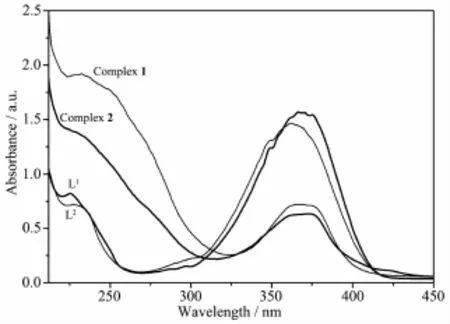
Fig.6 UV-Vis spectra of L1,L2(2.4×10-5mol·L-1),and complexes 1~2(5.8×10-6mol·L-1)in CH3OH
3 Conclusions
In this work,two Pd(Ⅱ)complexes were prepared in high yield under refluxing in the mixed solution of THF and CH3CN for 2 h.Their structures were characterized by elemental analyses,IR spectra,1H NMR spectra,UV-Vis spectral and single-crystal X-ray diffraction.The asymmetric units of both the compounds 1 and 2 contain two independent molecules. The ligands are found to bind the Pd(Ⅱ)via their N and O donors giving a four-coordinate Pd(Ⅱ)center with a trans-N2O2donor set.In 1,the molecules A form 1D chains through hydrogen bonds along the c axis and the molecules B form 1D chains via weak hydrogen bonds along the b axis,molecules A and B are further extended through the weak interactions into a 3D networks.In 2,the weak interactions in molecules D link molecules forming an infinite chain along the b axis,which are further interlinked to molecules C via unconventional hydrogen bonds into a 2D layered framework.
References:
[1]Dethlefs K M,Hobza P.Chem.Rev.,2000,100(1):143-168
[2]GUO Hui-Rui(郭辉瑞),TAO Zhu(陶朱),ZHU Qian-Jiang(祝黔江),et al.Chinese J.Inorg.Chem.(无机化学学报),2002, 18:435-441
[3]Aakeroy C B.Acta Crystallogr.B,1997,53:569-586
[4]Guru Row T N.Coord.Chem.Rev.,1999,183:81-100
[5]Nangia A.J.Chem.Sci.,2010,122(3):295-310
[6]Jeffrey G A,Saenger W.Science,1992,257:1774-1775
[7]Hunter C A.Chem.Soc.Rev.,1994,23:101-109
[8]Miao X H,Zhu L G.CrystEngComm,2009,11:2500-2509
[9]TANG Li-Zhi-Peng(唐李志鹏),YANG Ming-Wei(杨明炜), CHENG Mei-Ling(程美令),et al.Chinese J.Inorg.Chem. (无机化学学报),2015,31:603-610
[10]Yang G P,Hou L,Luan X J,et al.Chem.Soc.Rev.,2012, 41:6992-7000
[11]Hunter C A.Angew.Chem.Int.Ed.Engl.,1993,32:1584-1587
[13]Subramanian S,Zawarotko M J.Coord.Chem.Rev.,1994, 137(12):357-401
[14]Aakeroy C B,Nieuwenhuyzen M.J.Am.Chem.Soc.,1994, 116:10983-10991
[15]Weissbuch I,Popovitz-Biro R,Lahav M,et al.Acta Crystallogr. B,1995,51(12):115-148
[16]Kadirvelraj R,Umarji A M,Robinson W T,et al.Chem. Mater.,1996,8(9):2313-2323
[17]Fuji K,Furuta T,Otsubo T,et al.Tetrahedron Lett.,1999, 40:3001-3004
[18]Dai C Y,Nguyen P,Marder T B,et al.Chem.Commun., 1999,24(24):2493-2494
[19]Coates G W,Dunn A R,Henling L M,et al.Angew.Chem. Int.Ed.,1997,36:248-251
总之,德育是一切教育的前提,我们应不断改革和完善德育工作模式,让德育教育更加贴近学生的生活,让学生真正成长为德才兼备的有用之材。
[20]Crabtree R H.Science,1998,282:2000-2001
[21]Crabtree R H,Siegbahn P E M,Eisenstein O,et al.Acc. Chem.Res.,1996,29:348-354
[22]Richardson T B,Gala S,Crabtree R H.J.Am.Chem.Soc., 1995,117:12875-12876
[23]Alkorta I,Rozas I,Elguero J.Chem.Soc.Rev.,1998,27:163-170
[24]Campbell J P,Hwang J W,Young V G,et al.J.Am.Chem. Soc.,1998,120(3):521-531
[25]Sini G,Eisenstein O,Yao W,et al.Inorg.Chim.Acta,1998, 280:26-29
[26]Braga D,Leonardis P D,Grepioni F,et al.Inorg.Chem., 1998,37:3337-3348
[27]Klooster W T,Koetzle T F,Siegbahn P E M,et al.J.Am. Chem.Soc.,1999,121:6337-6343
[28]Wolstenholme D J,Cameron T S.J.Phys.Chem.A,2006, 110:8970-8978
[29]Yilmaz V T,Degirmencioglu I,Andac O,et al.J.Mol.Struct., 2003,654:125-129
[30]Nimz O,Gessler K,Usón I,et al.Carbohydr.Res.,2004, 339:1427-1437
[31]Georg S F,Laurent P,Aline M F,et al.J.Organomet.Chem., 2000,609:196-203
[32]YU Zhen-Hua(于振华),YIN Cheng-Lie(尹承烈).Chem.J. Chinese Universities(高等学校化学学报),1982,2:210-216
[33]Sheldrick G M.S HELXS-97 and SHELEXL-97,Program for the Solution and Refinement of Crystal Structures,University of Göttingen,Göttingen,Germany,1997.
[34]Budzisz E,Keppler B K,Giester G,et al.Eur.J.Inorg. Chem.,2004,22:4412-4419
[35]Stromnova T A,Paschenko D V,Boganova L I,et al.Inorg. Chim.Acta,2003,350:283-288
[36]Ma L,Smith R C,Protasiewicz J D.Inorg.Chim.Acta,2005, 358:3478-3482
[37]Qin Z Q,Jennings M C,Puddephatt R J.Inorg.Chem., 2002,41:5174-5186
Syntheses,Crystal Structures and Spectral Properties of Two Pd(Ⅱ)Complexes Containing Furan-3-one Ligands
ZHAO Ming-Xia1XIONG Li-Qin2CAI Yong-Le1CHANG Jin3REN Hong-Yu3ZHANG Hua-Bei3QI Chuan-Min*,3
(1Department of Mining Engineering,Shanxi Institute of Technology,Yangquan,Shanxi 045000,China)
(2School of Biomedical Engineering,Shanghai Jiao Tong University,Shanghai 200025,China)
(3Key Laboratory of Radiopharmaceuticals,Ministry of Education,College of Chemistry, Beijing Normal University,Beijing 100875,China)
Two compounds,Pd(L1)2(1)and Pd(L2)2(2)(L1=(Z)-4-((p-toluidino)methylene)-2,2,5,5-tetramethyldihydrofuran-3(2H)-one,L2=(Z)-4-((o-toluidino)methylene)-2,2,5,5-tetramethyl-dihydrofuran-3(2H)-one)),have been synthesized and characterized by elemental analyses,IR spectra,1H NMR spectra,UV-Vis spectral and singlecrystal X-ray diffraction.The crystal structures of compounds are shown to contain a variety of weak interactions. In 1,the C-H…O interactions between the furan O atom and methyl H atom of phenyl ring bridge molecules forming an infinite chain along the c axis,which is interconnected via the weak C-H…H-C interactions and CH…C interactions,giving rise to a 3D network.In 2,molecules are held together by weak C-H…H-C interactions and C-H…C interactions into a 2D layered framework.CCDC:289373,1;629001,2.
syntheses;Pd(Ⅱ);furan-3-one;crystal structure;weak interactionsntroduction
O614.82+3
A
1001-4861(2016)11-2017-08
10.11862/CJIC.2016.220
2016-01-09。收修改稿日期:2016-08-08。
国家自然科学基金(No.230100075)和国家科技支撑(No.2014BAA03B03)项目资助。*通信联系人。E-mail:qicmin@sohu.com
